Bushido
I served as the product designer and project owner for Bushido, a blockchain‑enabled game built on the MultiversX (ex Elrond) network. Beyond defining the product vision, I architected the game economy, authored the end‑to‑end user experience, and established a coherent visual identity that could scale across touchpoints. The remit included requirements elicitation, systems modeling for token and NFT flows, interaction design for both transactional and play contexts, and delivery of high‑fidelity prototypes and a public‑facing presentation website. Bushido employs idle battles, NFT‑based characters, and a native token (DO). The central objective was to craft a low‑friction experience in which the blockchain layer remains operationally present yet perceptually invisible, while the economy is sufficiently constrained to remain sustainable and governable over time.
From a design‑research standpoint, the project interrogates a persistent contradiction in crypto games: players are promised ownership and reward, yet encounter excessive cognitive load, opaque interfaces, and volatile economies. Bushido responds with a deliberate synthesis of minimal language, predictable feedback cycles, and clear economic surfaces that make risk legible. The result is not only a game UI, but a product system intended to support trust, repeat use, and fair value exchange.
Problems Identified
A review of public crypto games revealed several interlocking problems.
First, onboarding was both cognitively and financially heavy: users navigated multiple wallets and token bridges before any intrinsic value was experienced.
Second, token economies trended inflationary, leading to extractive behaviors and short product half‑lives.
Third, interfaces frequently obscured complex actions, such as signing transactions, breeding assets, or configuring staking, thereby eroding confidence.
Finally, visual inconsistency signaled low craft and diminished trust, especially when money changed hands.
For Bushido, these findings became design constraints. All early interactions privilege comprehension over conversion; economic flows emphasize sinks and limits; and UI surfaces communicate state changes in plain language with explicit confirmations. The visual system is intentionally quiet: restrained color, generous whitespace, and stable rhythm make the unusual (blockchain) feel ordinary and safe.
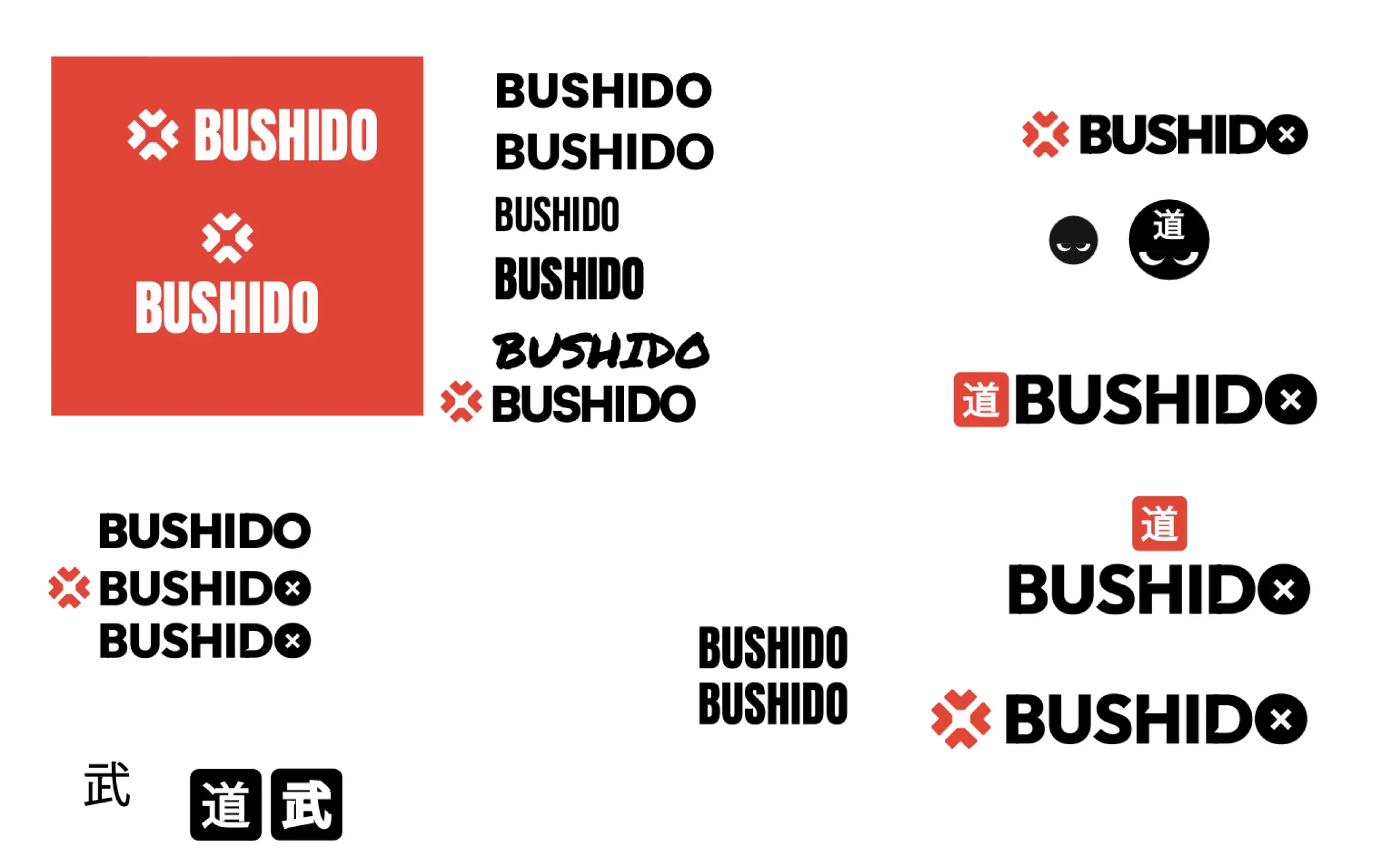
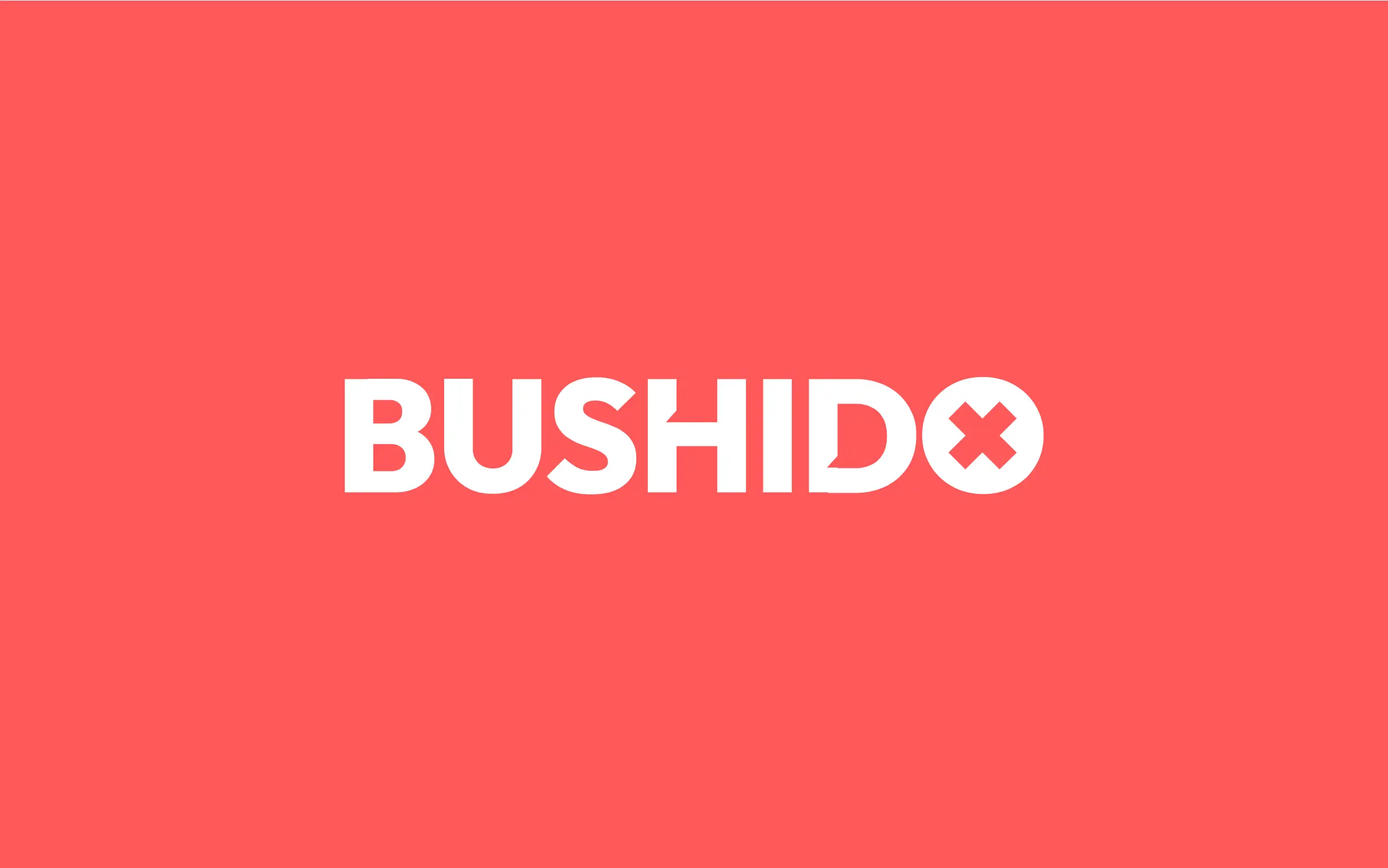
The Challenge
The project centered on two research questions.
First, how might we make true asset ownership and predictable earnings accessible to a broad audience without exposing users to blockchain complexity.
Second, how might we preserve a healthy economy while keeping the game simple and enjoyable to play. These questions were translated into testable hypotheses, for example, that Maiar QR would reduce time‑to‑first‑play, or that daily match caps would suppress token inflation without harming perceived agency. Design work then proceeded as a cycle of hypothesis, prototype, and observational testing.
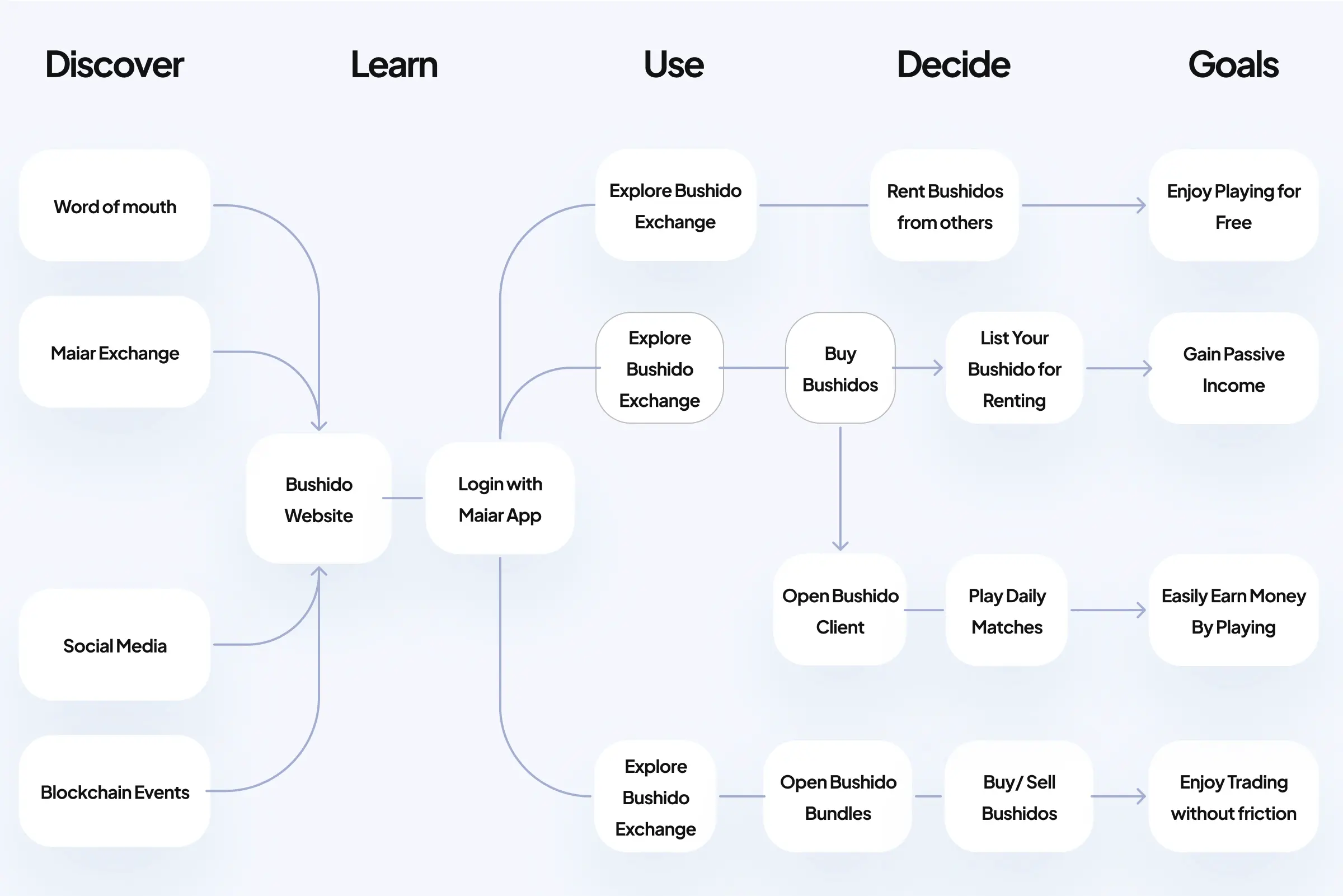
Discovery and Explorations
Discovery emphasized competitive analysis (Axie Infinity, Thetan Arena) and extensive exploratory prototyping in Figma. Two identity systems were pursued in parallel: a minimalist, flat system for the DO Exchange to optimize cognition during financial actions, and an immersive, tactile system for the Game client to amplify affect during play. Iterations concentrated on layout and UX fundamentals: grid systems and responsive breakpoints; information architecture for marketplace and account flows; typographic scale and readable density; contrast ratios and color strategy; progressive disclosure for high‑stakes actions; empty‑state, loading, and error messaging; and the pacing of the battle loop (cadence, daily limits via Game Energy, and token sinks such as fees, breeding, and bundles).
Rather than conducting user tests at this stage, I evaluated flows against established design heuristics and WCAG guidance, refining copy and interaction patterns to reduce cognitive load.
Methodologically, the work paired service‑blueprint mapping (linking wallet, exchange, and game) with micro‑interaction tuning (iconography, timing, and copy) and accessibility considerations (e.g. minimum target sizes, motion‑reduction preferences).I recorded clear design notes and reasons in the system library after each exploration. That record guided later iterations and kept decisions traceable, not just stylistic.
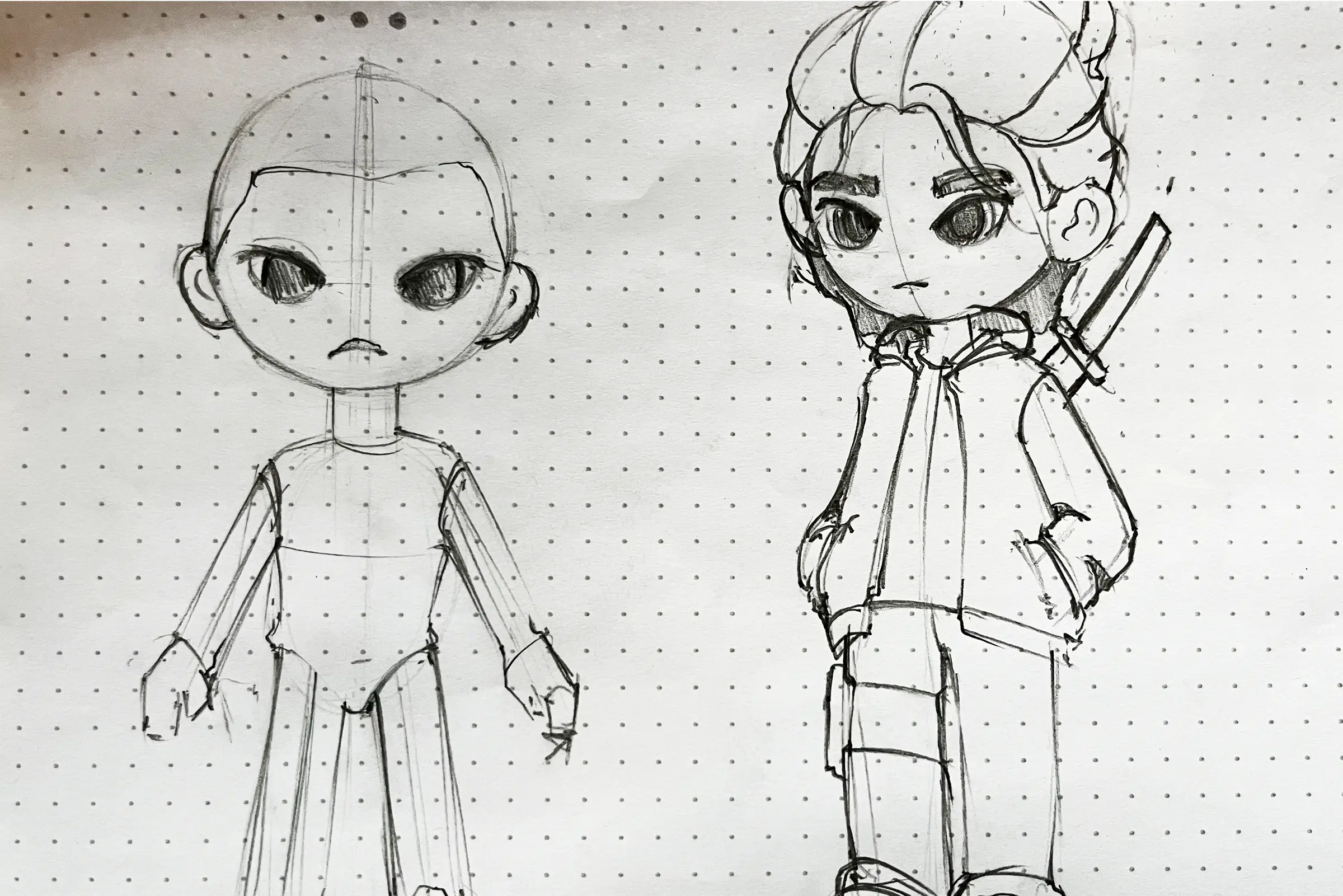

Character Design System
Character design in Bushido functions as both an expressive layer and an operational system. Each warrior is simultaneously a gameplay unit, a brand asset, and an NFT with verifiable attributes. The goal was to establish a language that reads instantly at small sizes, scales to thousands of variants, and maps cleanly to metadata used across the Exchange and Game.
At the core is a stylized chibi proportion set that prioritizes silhouette legibility and emotive readability. Heads are enlarged to carry identity and eye‑line, torsos are simplified to reduce visual noise in motion, and extremities are exaggerated just enough to communicate class without fine detail. The palette favors high local contrast within the character and controlled contrast against UI backgrounds, so thumbnails remain clear in the marketplace grid, HUD chips, and post‑match summaries. Lighting is standardized to a three‑point schema with a subtle rim to preserve edge definition; renders are framed with common safe‑zones to prevent crop drift across placements.
The cast is organized around five virtues mapped to elemental motifs: Integrity (Gi, fire), Respect (Rei, earth), Honor (Meiyo, light), Sincerity (Makoto, wind), and Compassion (Jin, void). Each virtue informs posture, motion intent, and material treatment.
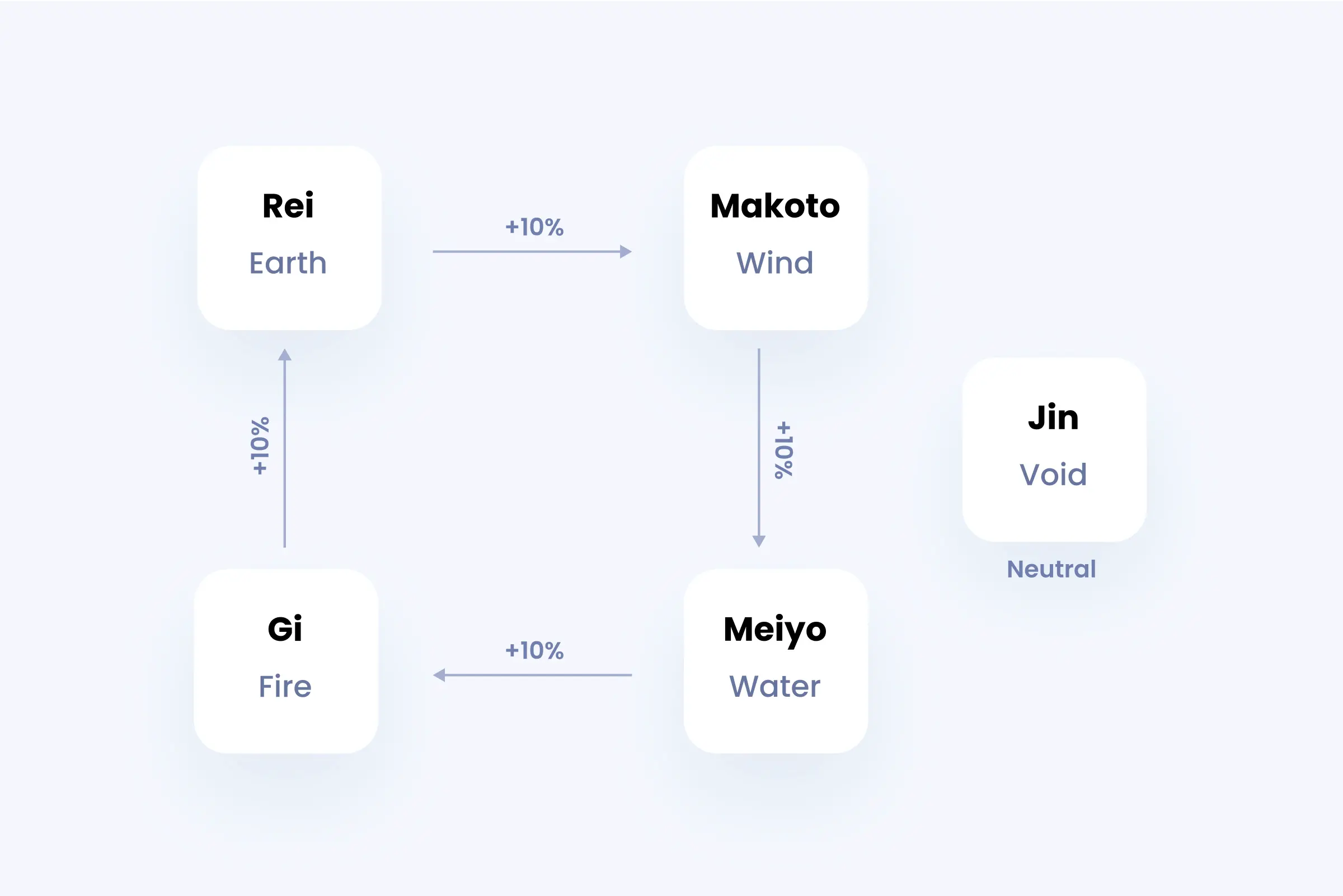
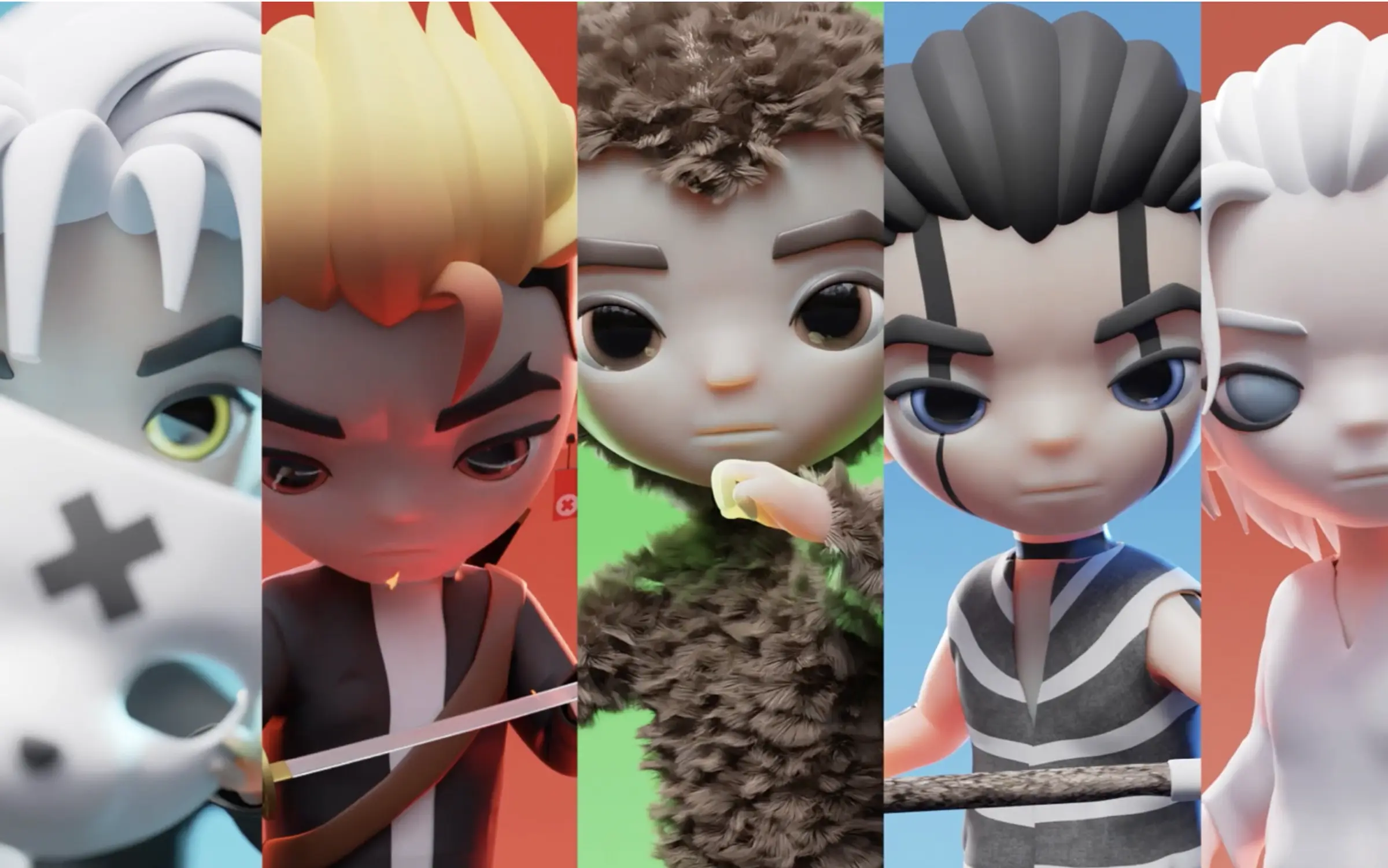
DO Exchange: Product Purpose
The DO Exchange is the operational hub for wallets, NFTs, and transactions, encompassing QR connection, trading, bundles, breeding, staking, and account management. The interface is flat and spacious to reduce cognitive load, with a typographic hierarchy that exposes decision‑critical attributes at a glance. Progressive disclosure is applied to actions with financial consequence. Error and success states are explicit, and transaction confirmations use consistent verbs and numbers to minimize ambiguity.
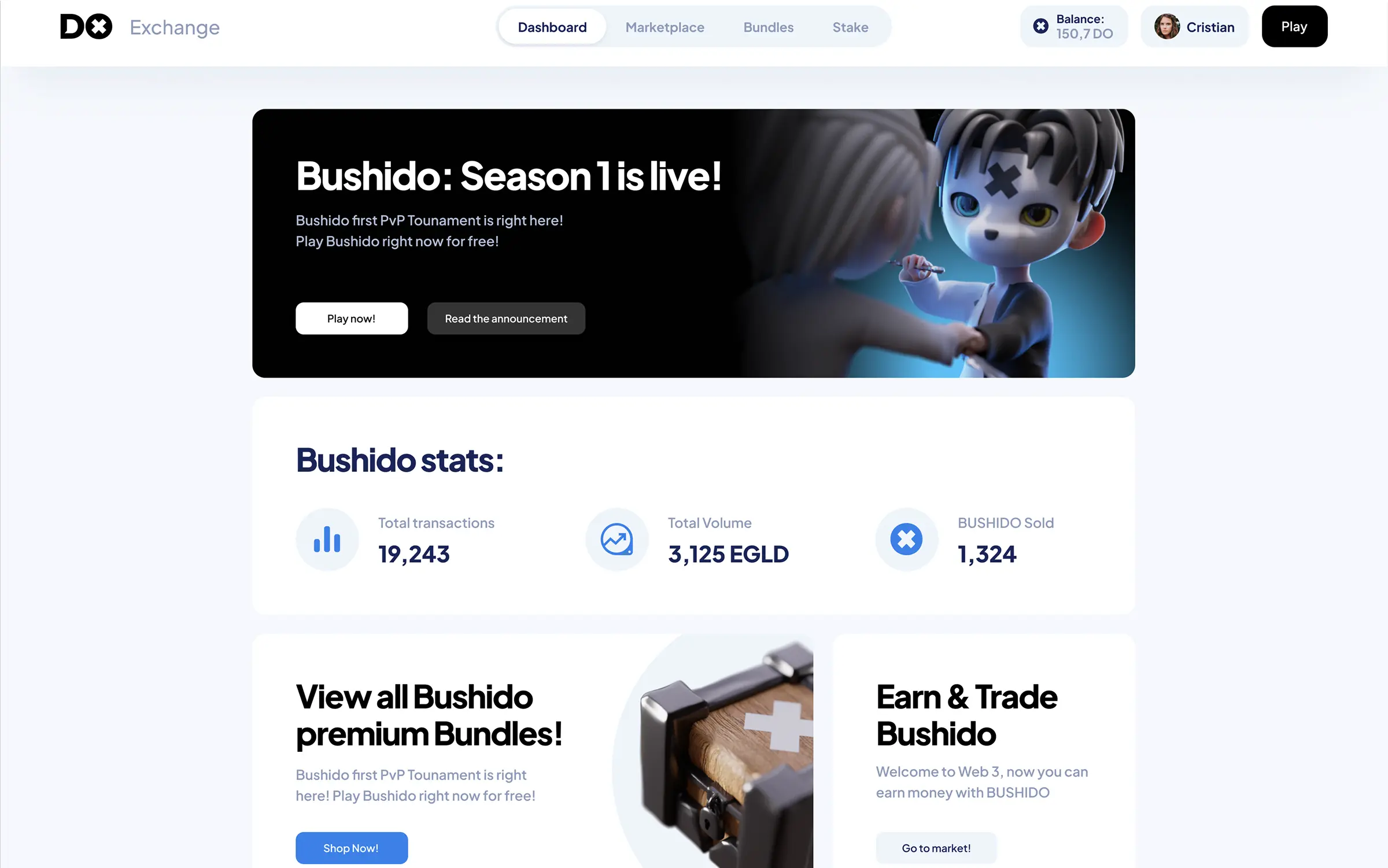
What it solves: The Exchange lowers the entry barrier by reframing blockchain actions in concise, non‑technical language and surfacing the data that matters for valuation (rarity, level, body parts, provenance). It also centralizes complex operations behind predictable patterns, reducing support burden and user anxiety.
Essential flows: QR login, Bundles, Marketplace with filters, NFT detail, Breeding, Staking, Your Account. Each flow has defined preconditions, visible indicators of progress (e.g., signing, pending, settled), and reversible off‑ramps where feasible.
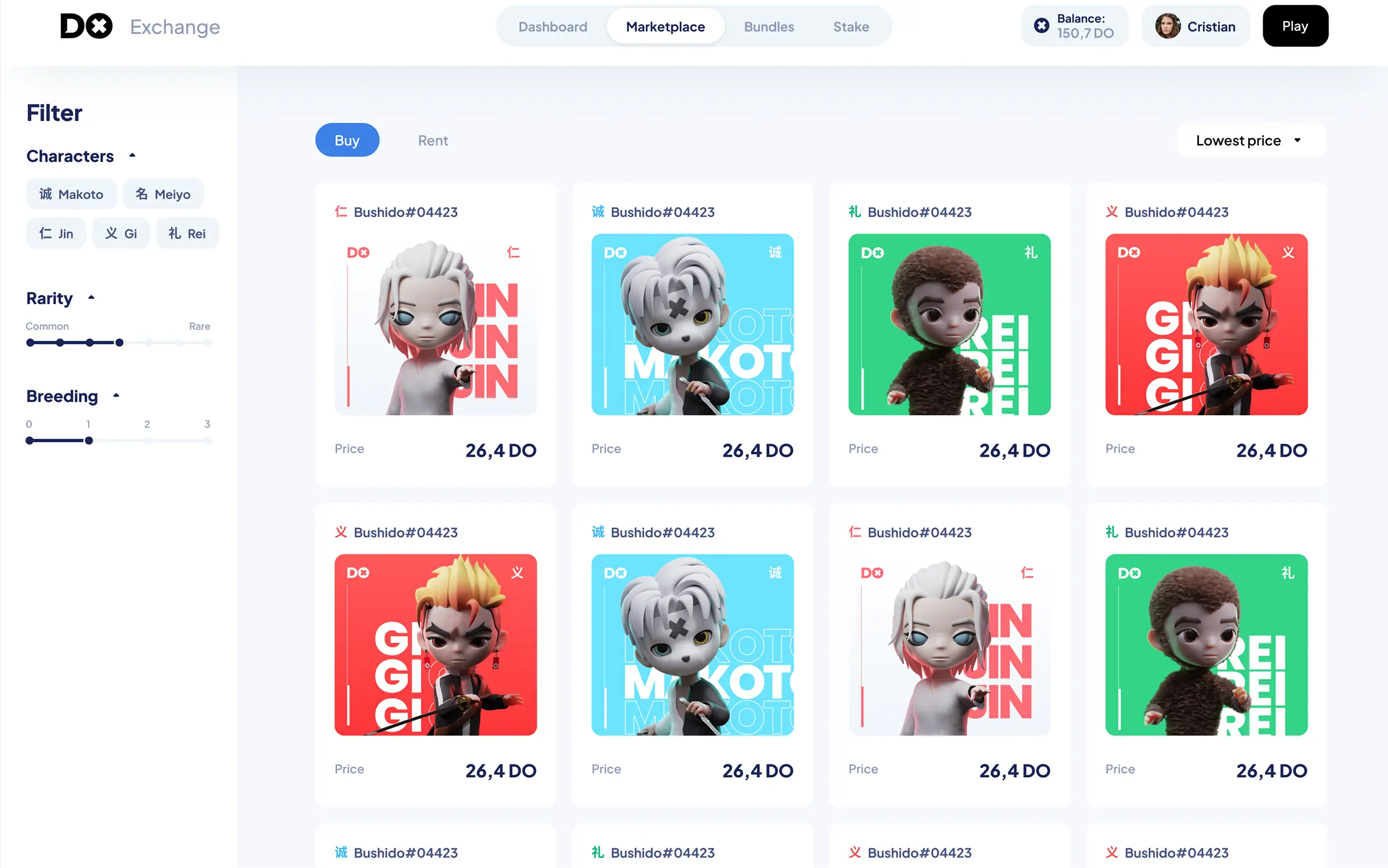
Bushido Game: Product Purpose
The Game client hosts battles, progression, ranks, and team management. The visual style is dark, with restrained skeuomorphism and glassmorphism that create depth while keeping action in focus. Interface density is kept low; affordances are explicit; and the HUD privileges real‑time comprehension over ornament.
What it solves: Short, legible matches support daily play and predictable pacing. Rank‑aligned rewards make progress intelligible and equitable. Clear post‑match summaries connect effort with outcome through XP, level growth, and token rewards.
Mechanics: 2v2 idle battles, energy‑gated special abilities, 20 competitive matches per day, rank system with per‑win payouts, XP accrual, and level growth. These mechanics are intentionally simple, enabling newer players to compete while still rewarding mastery through timing and team composition.
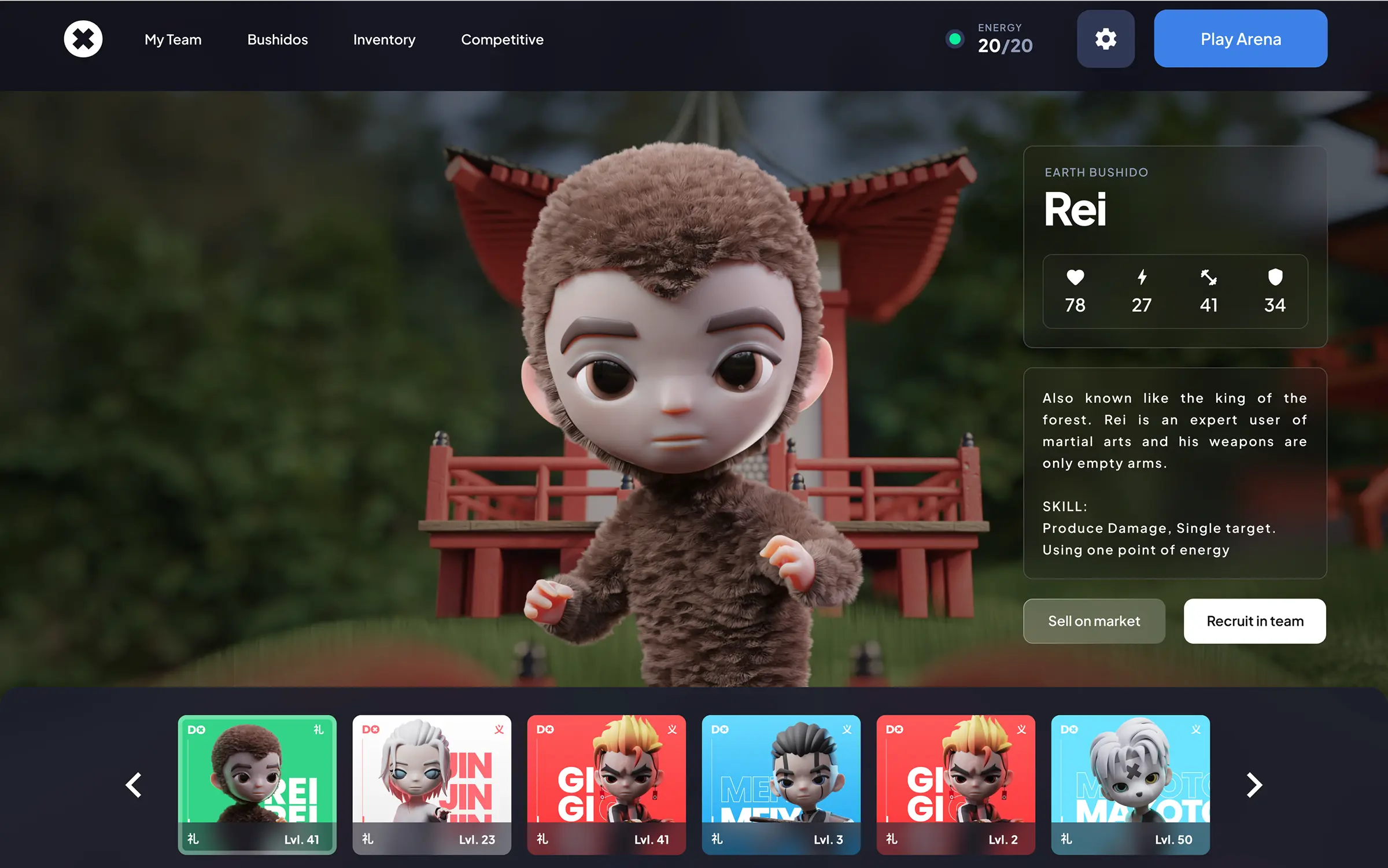
Outcomes
I had to deliver high‑fidelity prototypes for both products and a public website articulating the proposition. In effect, Bushido achieved three material outcomes: markedly lower time‑to‑first‑play, stronger trust signals across transactional flows, and a coherent demonstration that invisible blockchain interactions and transparent economics can coexist without cognitive penalty.
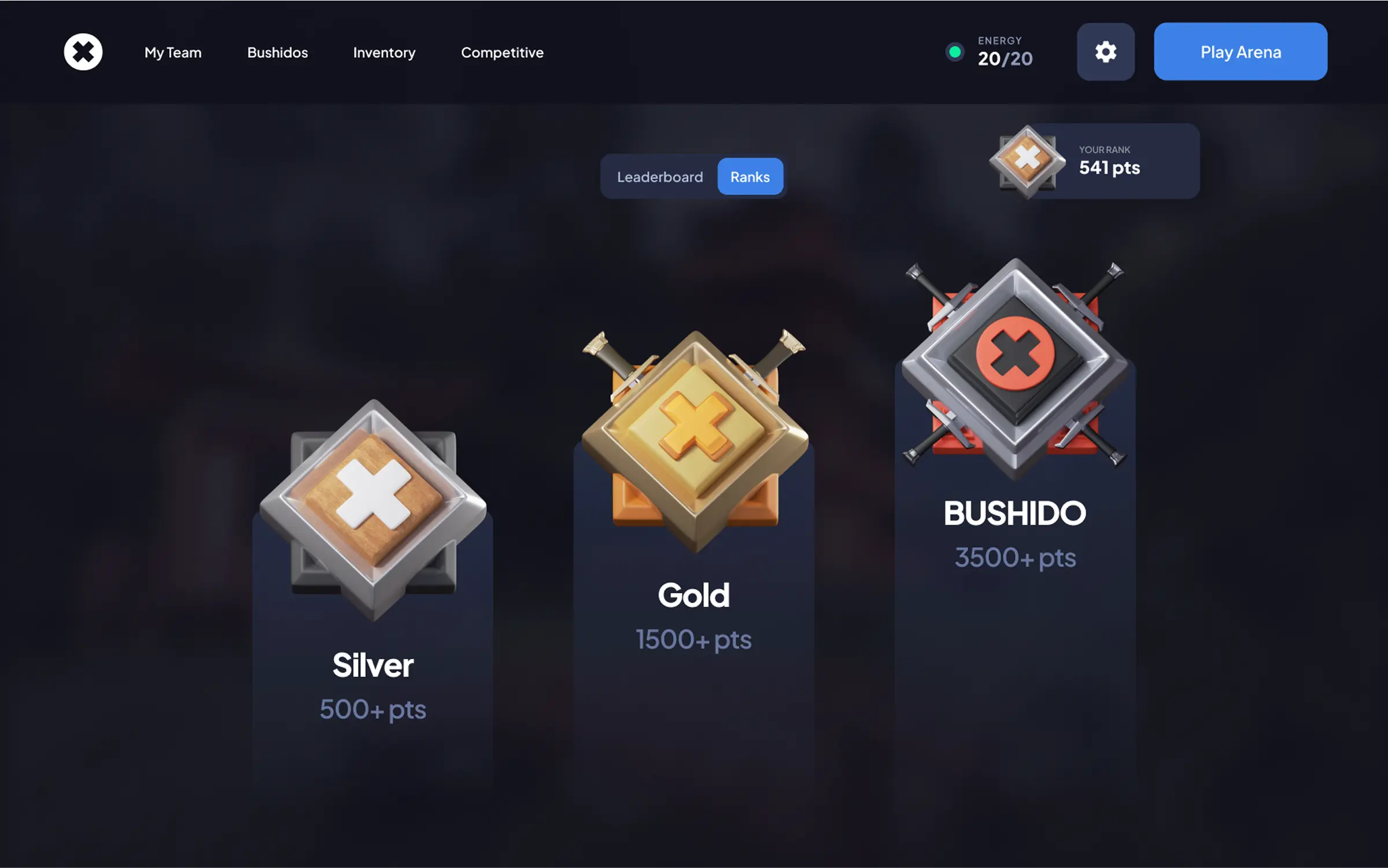
What I Learned
Invisible technology is a UX practice, not a slogan: disciplined language, progressive disclosure, and predictable feedback make risk legible and reduce anxiety. Economy design is product design: daily limits, breeding costs, and marketplace fees are communicative constraints when they are explicit and justified.
Visual calm builds credibility: restrained color, generous whitespace, and steady rhythm make unfamiliar actions feel ordinary and safe. Modularity compounds value: a rig‑first character system, componentized UI, and trait‑mapped metadata reduce entropy and keep expression consistent.
Narrative is systems glue: virtues mapped to roles and materials stabilized tone, iconography, and copy. Even as a thesis, metrics matter: I would track time‑to‑first‑play, core‑loop completion, cohort retention, and token velocity as leading indicators of usability and economic health.
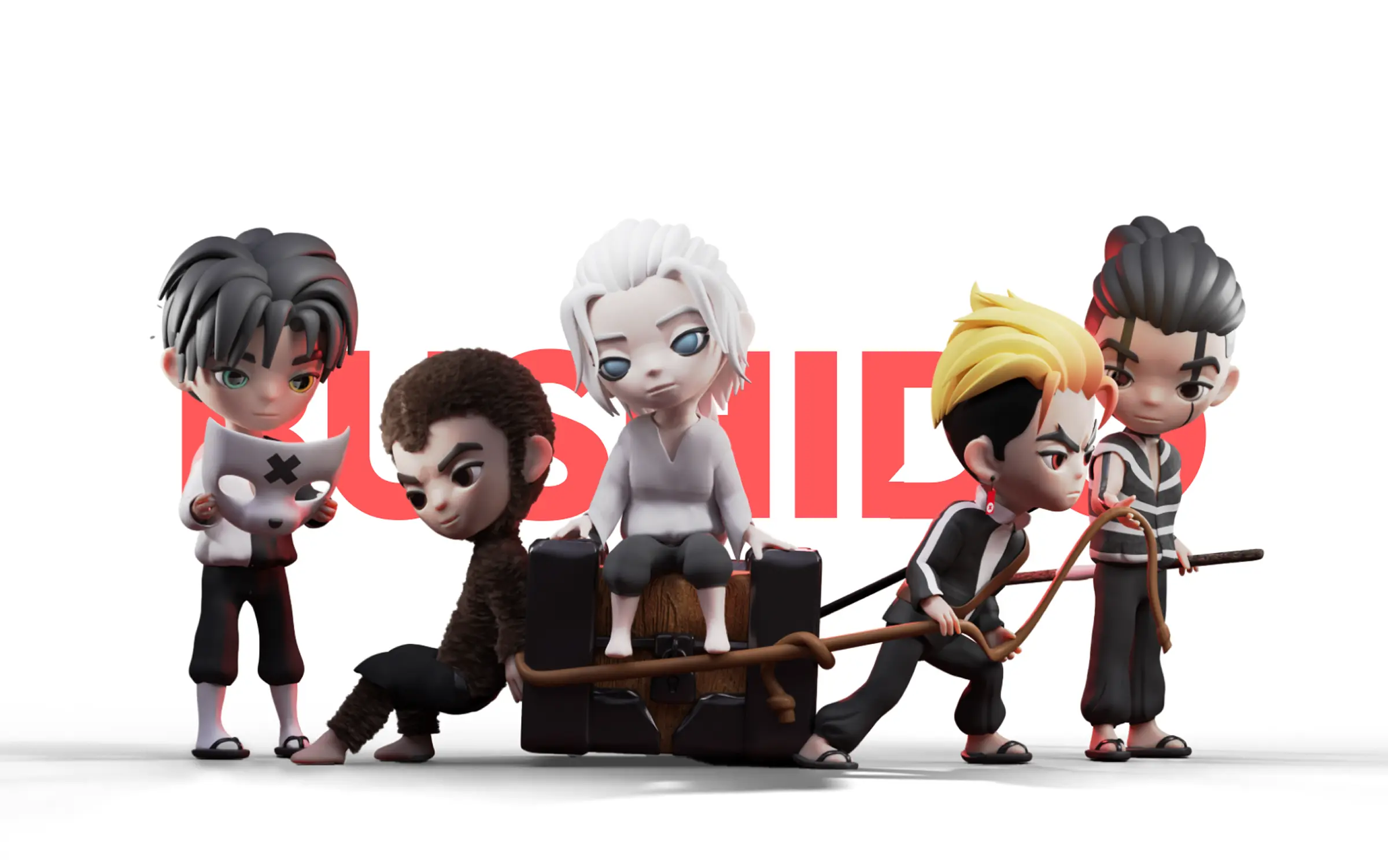
What Endures
Although Bushido concludes as a bachelor’s thesis, it leaves a transferable toolkit: QR‑based onboarding that normalizes wallets; a dual‑surface design language (functional clarity for Exchange, emotional depth for Game); a modular character and metadata system ready to scale; and principles for making complex systems feel calm, comprehensible, and fair.